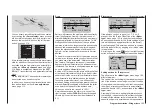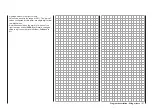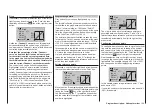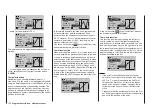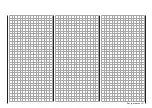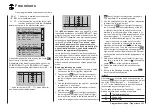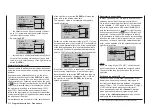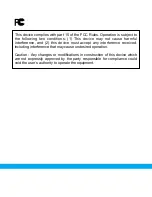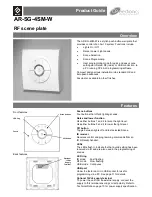
198 Program description - Helicopter mixer
Fine-tuning the throttle and collective pitch curve
Practical approach
Although the throttle and collective pitch control sys-
tems are based on separate servos, they are always
operated together by the throttle/pitch stick (except
during autorotation flight). This coupling is performed
by the helicopter program automatically.
In principle, the trim lever for control function 1 only
affects the throttle servo in the programs of the
mc-
16
HoTT and
mc-20
HoTT transmitters – with the
exception of the choice of “PT” in the “Throttle” line of
the »Stick mode« menu, page 116, which is avail-
able as standard on the
mc-20
HoTT transmitter
only. This »Stick mode« menu, which can be un-
locked on the
mc-16
HoTT transmitter as an extra-
cost option, also enables you to define whether the
trim lever of control function 1 is to be used as part of
the throttle limiter function (“GA”), or for idle trimming
during auto-rotation exercises (“AR”).
The process of fine-tuning throttle and collective
pitch, i. e. setting the motor power curve to match the
collective blade pitch setting, is the most important
aspect of setting up a model helicopter. The software
of the transmitters
mc-16
HoTT and
mc-20
HoTT provides for independent configuration of the
throttle, collective pitch and torque compensation
curves, in addition to the C1 control curve (»Channel
1 curve« menu, page 141).
While these curves can be modeled using up to six
points, fewer points are generally sufficient. We re-
commend starting with three-point curves to begin
with. This involves setting individual values for the
center point and other (optional) reference points, and
for the two end-points (“L”, “low”, and “H”, “high”) of
the throttle/collective pitch stick: together, these de-
fine the control curves.
Before setting the throttle and collective pitch func-
tion, the rods of all servos should be mechanically
pre-adjusted correctly according to the set-up instruc-
tions for the given helicopter.
Note:
The hover point should normally be set to the
center position of the throttle / collective pitch
stick. In special cases, e. g. for “3D” flight, de-
viating hover points can also be programmed.
For example, one point for normal flight attitude
above the center and one point for inverted flight
attitude below the center.
Idle setting and throttle curve
Note:
Since electric drive systems have no need for an
idle setting, motor idling does not need to be cali-
brated. Fine-tuning of the throttle and collective pitch
curve(s), however, must take place as for glow-pow-
ered helicopters.
The idle setting, whose detailed description begins on
page 127, always takes place with the throttle limiter
closed – normally with the trim lever of the C1 function
and only in special cases is the throttle limiter itself
also utilized (as standard, the right-sided proportional
rotary slider (Lv2)).
The programming of a corresponding value for the
“L” point of the throttle curve acts to set the descent
speed of the motor, without influencing the hover
configuration.
Here, for example, flight phase programming can be
used to set different throttle curves. This increased
system rotational speed below the hover point proves
to be useful in certain circumstances, e. g. for fast,
steep landing approaches with greatly reduced col-
lective pitch, and for aerobatics.
The figure depicts a curve with a
slightly changeable throttle setting
below the hover point at the control
center.
+100%
0%
OUTPUT
2
3
4
5
1
Control travel
Different throttle curves are programmed to be flight-
phase dependent in order to achieve the given opti-
mal adaptation to hovering flight as well as aerobat-
ics:
• Low system rotational speed with smooth, gentle
control response and low noise when hovering
• Higher rotor speed for aerobatics with motor
power set close to the maximum. In this case, the
throttle curve must also be adjusted in the hover
range.
Basic set-up procedure
Even though pitch and throttle curves can be set elec-
tronically over a wide range with the
mc-16
HoTT
and
mc-20
HoTT transmitter, all linkage in the
model should already be mechanically pre-adjusted
correctly according to the instructions for the given
helicopter. Experienced helicopter pilots will be glad
to help with this basic set-up.
The carburetor linkage must be set so that the throttle
is just past the fully open setting with collective pitch
set to maximum or, for electric helicopters, with the
speed controller set to full. When the throttle limiter is
closed, however, it must be possible to just close off
the carburetor using the C1 trim lever (rapid throttle
setting of the “digital trim”, see page 58), without the
servo mechanically striking its end-stop. For electric
helicopters, it must be possible to cut the electric
motor’s speed controller safely with the throttle limiter
closed.
Take great care when configuring these settings, by
adjusting the control linkage as required and/or alter-
Summary of Contents for HoTT MC-16 Series
Page 1: ...Programming Manual mc 16 mc 20 HoTT 1 en mc 16 mc 20...
Page 27: ...27 For your notes...
Page 53: ...53 For your notes...
Page 61: ...61 For your notes...
Page 65: ...65 For your notes...
Page 71: ...71 For your notes...
Page 103: ...103 For your notes...
Page 107: ...107 For your notes...
Page 111: ...111 For your notes...
Page 155: ...155 For your notes...
Page 165: ...165 For your notes...
Page 201: ...201 For your notes...
Page 229: ...229 For your notes...
Page 231: ...231 For your notes...
Page 261: ...261 For your notes...
Page 265: ...265 For your notes...
Page 301: ...301 For your notes...
Page 327: ...327 For your notes...
Page 328: ...328 For your notes...


